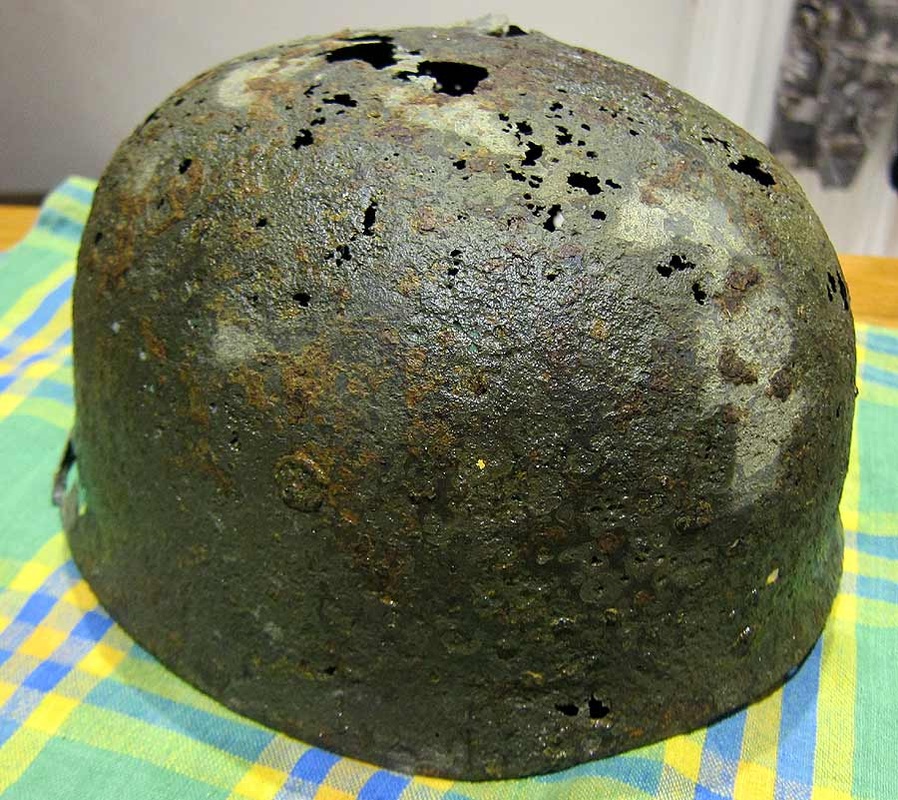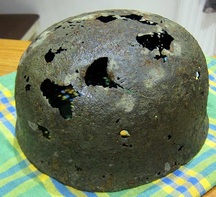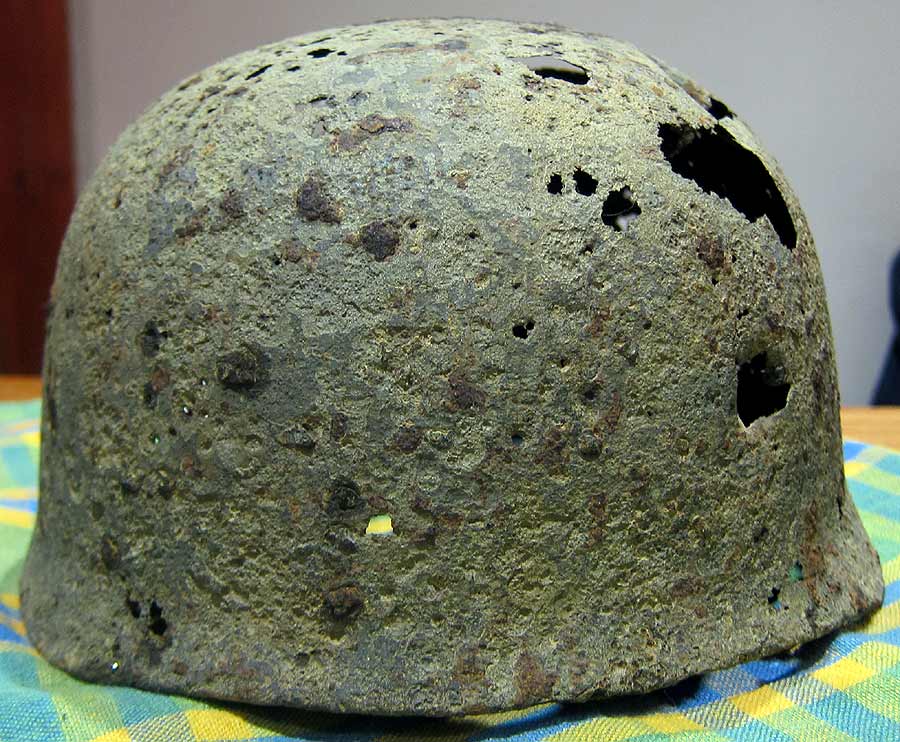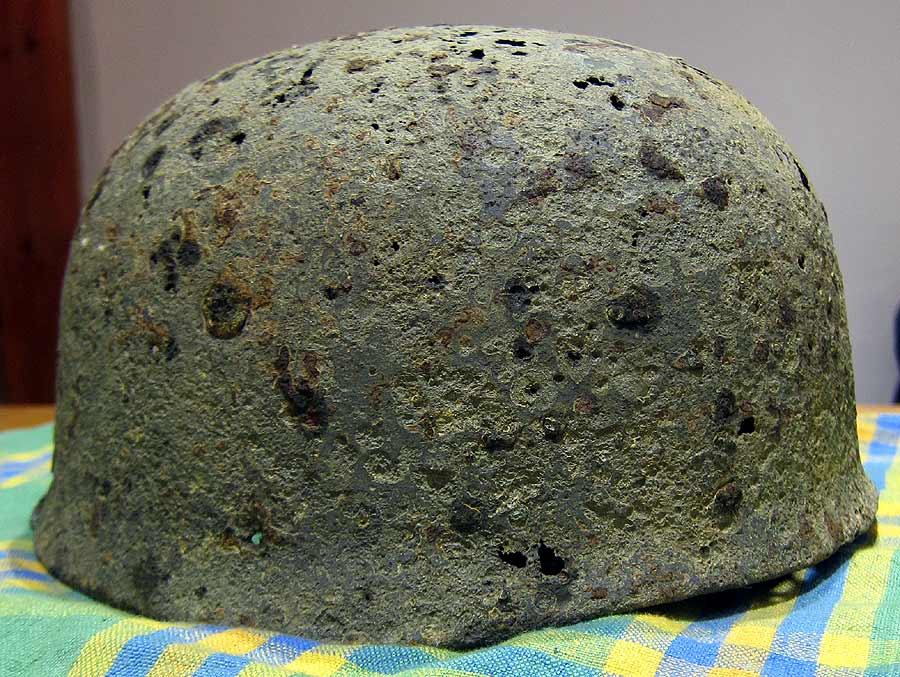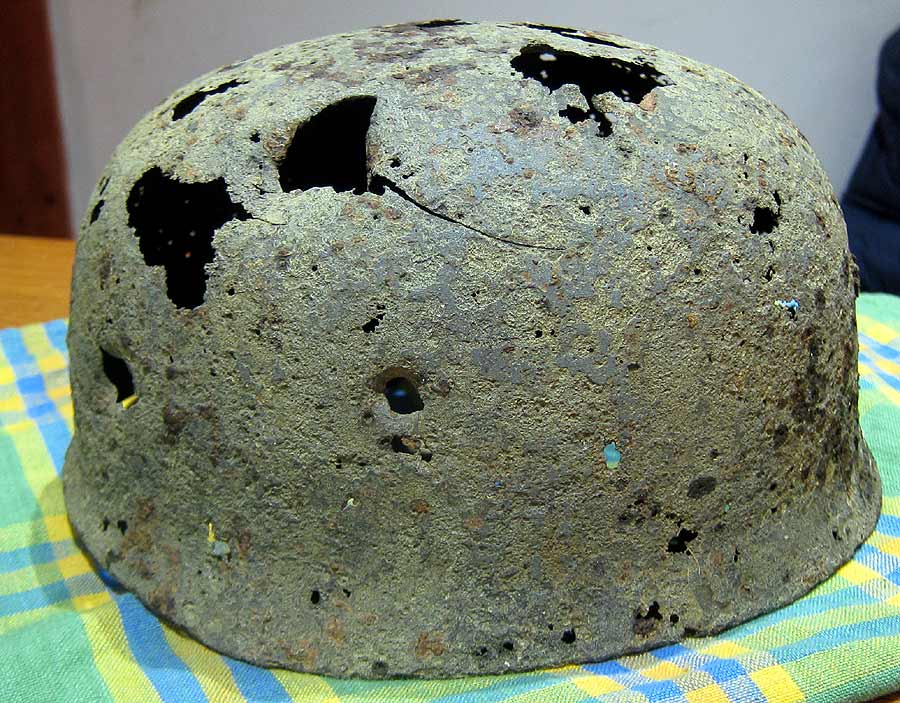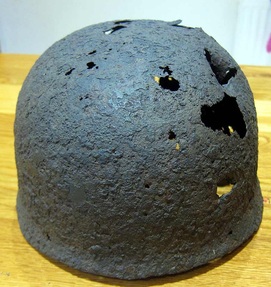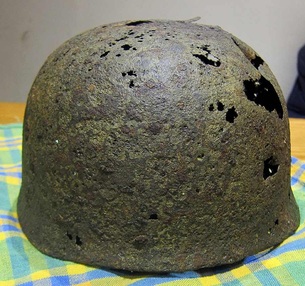Refurbishment > WW2 German M38 Paratrooper Relic Helmet Refurbishment
WW2 German M38 Paratrooper Relic Helmet Refurbishment:
After reading about the attributes of Oxalic Acid and its abilities to remove rust but retain paint and other non-rusty parts such as rubber and leather we thought we should give it a try. We spoke to a few people first and apparently they use this in museums and other restoration facilities.
It's just a stronger vinegar apparently but has nasty fumes and will burn the skin so if you try this at home make sure you wear rubber gloves, eye protection and a full NBC (Nuclear Biological & Chemical), suit if you are going to spill the stuff on your skin - we take no responsibility for you trying this at home. Also make sure the area is well ventilated.
So we chose a helmet which had leather, rubber, some paint and a galvanised grommet as well as lots of dirt and rust present. This is a M38 German Paratrooper Helmet which has received several areas of battle damage. One thing is for sure, if a para was wearing this he would not have survived as we counted at least 5 shell or mortar damaged holes, both inward and outward. So we dedicate this helmet to the Fallschirmjaeger who was wearing it, we hope he would prefer it restored and on display rather than just rusting away in some distant battlefield.
It's just a stronger vinegar apparently but has nasty fumes and will burn the skin so if you try this at home make sure you wear rubber gloves, eye protection and a full NBC (Nuclear Biological & Chemical), suit if you are going to spill the stuff on your skin - we take no responsibility for you trying this at home. Also make sure the area is well ventilated.
So we chose a helmet which had leather, rubber, some paint and a galvanised grommet as well as lots of dirt and rust present. This is a M38 German Paratrooper Helmet which has received several areas of battle damage. One thing is for sure, if a para was wearing this he would not have survived as we counted at least 5 shell or mortar damaged holes, both inward and outward. So we dedicate this helmet to the Fallschirmjaeger who was wearing it, we hope he would prefer it restored and on display rather than just rusting away in some distant battlefield.
We mixed approx 6% Oxalic Acid to 94% water. And placed the helmet in the solution. We left it overnight and then scrubbed it with both a natural brush and a nylon washing up brush. We could have used thick wire wool but we did not want any of the natural steel to show through or it to look restored aggressively.
We found that we had to leave it for 6 days, scrubbing twice a day to get rid of the heavy dirt and rust impregnations. The water turns green by about day two!
We found that we had to leave it for 6 days, scrubbing twice a day to get rid of the heavy dirt and rust impregnations. The water turns green by about day two!
The three pictures below show the helmet on day 6 and just as it was taken out of the Oxalic Acid solution and after being soaked in Baking Soda for an hour to neutralise the acid. Notice how some areas have started to dry out out while the rest are still wet. There is a green tone to the helmet and we think this is partly due to the acid and also partly its natural colour showing through in areas.
The pictures below show the helmet fully dried out after being neutralised with Baking soda. Notice how it looks green but also unnatural and dry in appearance.
We have now sealed, fed and preserved the helmet with appropriate sealer. You can use light oil, furniture spray or similar products to do this. This prevents it re-rusting and keeps it looking well maintained rather than just a rust bucket. If you do this over several months it builds up a nice deep natural looking patina.
The completed helmet - before and after pictures:
So we think that the pictures above show that restoring a relic helmet can be rewarding and take it a step back in time to a closer match to the way it was. The acid had no effect on the rubber or leather chinstrap (there was a piece still attached on the inside). It did however colour the zinc coated grommet under the M38 bolt a copper colour!






